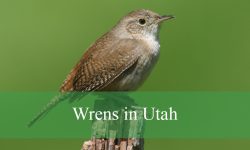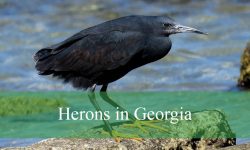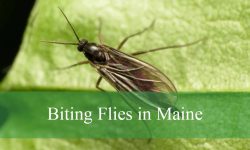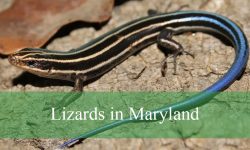North Carolina is home to a rich diversity of birdlife, and among the most striking residents are the cardinals and their close relatives. Known for their vivid colors and melodic songs, these birds attract birdwatchers from across the state, whether in backyards, forests, or parks.
The family Cardinalidae in North Carolina includes a variety of species, each with unique plumage, habits, and seasonal patterns. From the bright red Northern Cardinal to the colorful Summer Tanager and Indigo Bunting, these birds offer both visual delight and fascinating behaviors to observe.
In this guide, we will explore five cardinal species found in North Carolina, providing detailed identification tips, seasonal information, and habitat preferences. Whether you are a beginner or an experienced birder, this list will help you recognize and enjoy these beautiful birds throughout the year.
Different Types of Cardinals Found in North Carolina
Northern Cardinal (Cardinalis cardinalis)
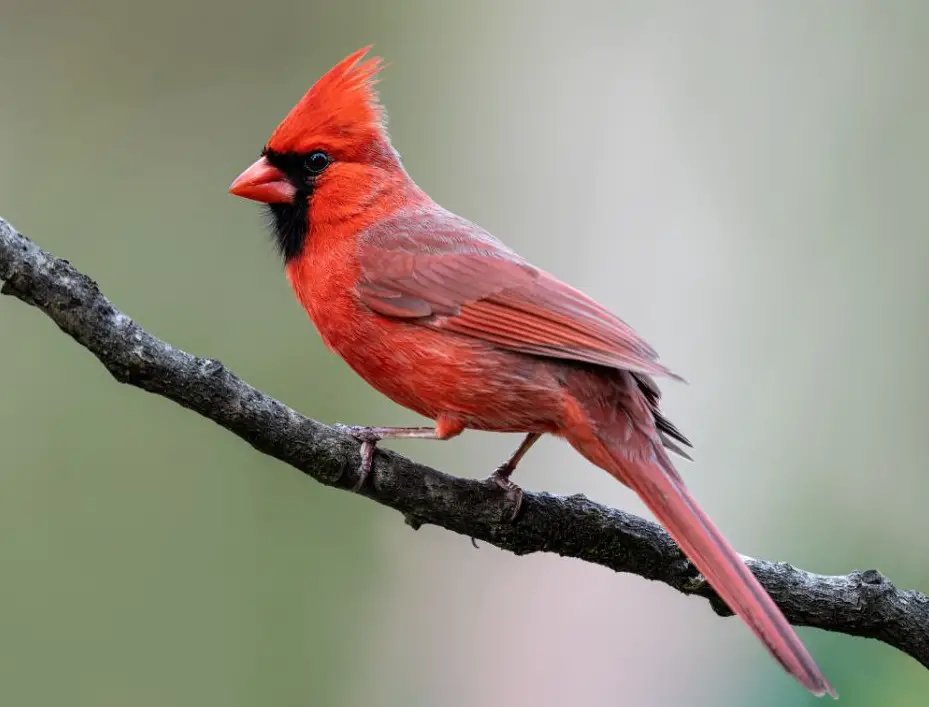
The Northern Cardinal is one of the most iconic birds in North Carolina, instantly recognizable by its vivid red plumage in males and warm brown tones in females. Males have a bright red body, black mask around the face, and a prominent crest on their head, while females are mostly pale brown with reddish tinges on wings, tail, and crest. Both sexes have a thick, orange-red beak, perfect for cracking seeds.
Northern Cardinals typically measure 8–9 inches (20–23 cm) in length with a wingspan of about 9–12 inches (23–31 cm). They weigh around 1.5–1.7 ounces (42–48 grams). Their size, bright coloring, and distinctive crest make them easy to identify in forests, gardens, and suburban backyards.
Behaviorally, Northern Cardinals are non-migratory and are often seen year-round. They are territorial, especially during the breeding season, and males are known for their clear, whistling songs that are often exchanged between pairs. They feed primarily on seeds, fruits, and insects, using their strong beaks to crack hard shells.
Northern Cardinals prefer dense shrubbery, woodland edges, gardens, and hedgerows. In North Carolina, they are widespread and adapt well to both rural and urban environments. They often build cup-shaped nests low in shrubs or trees, making them relatively easy to spot during breeding season.
Fun fact: Northern Cardinals mate for life, and males often feed their mates as part of courtship behavior. Their bright color comes from carotenoid pigments in their diet.
Summer Tanager (Piranga rubra)
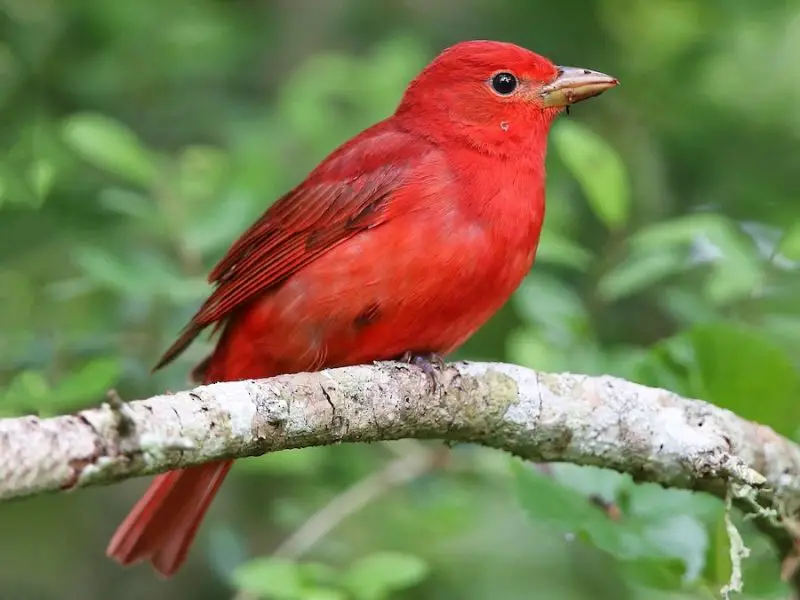
The Summer Tanager is a striking species found mainly in North Carolina during the warmer months. Adult males are entirely bright red, making them one of the most colorful birds in the state, while females are yellowish or golden, providing excellent camouflage in leafy canopies. Both have thick, conical beaks ideal for catching insects.
Adult Summer Tanagers measure 7.5–8.3 inches (19–21 cm) in length, with a wingspan around 11–12 inches (28–30 cm). They weigh roughly 1.1–1.3 ounces (32–36 grams). Despite their vivid coloration, they can be surprisingly hard to spot as they often stay high in the treetops, quietly foraging.
These birds are primarily insectivorous, with a notable preference for bees and wasps. They catch insects mid-flight or pluck them from foliage, often removing stingers by rubbing the insect on a branch before eating. Summer Tanagers are migratory, arriving in North Carolina in spring and departing southward in late summer or early fall.
Summer Tanagers inhabit open woodlands, forest edges, and riparian zones, often preferring areas with oak, pine, or mixed hardwood trees. They build cup-shaped nests high in trees, usually hidden in dense foliage to avoid predators.
Fun fact: Male Summer Tanagers are sometimes called “bee martins” because of their habit of catching and eating bees and wasps, skillfully avoiding stings.
Scarlet Tanager (Piranga olivacea)
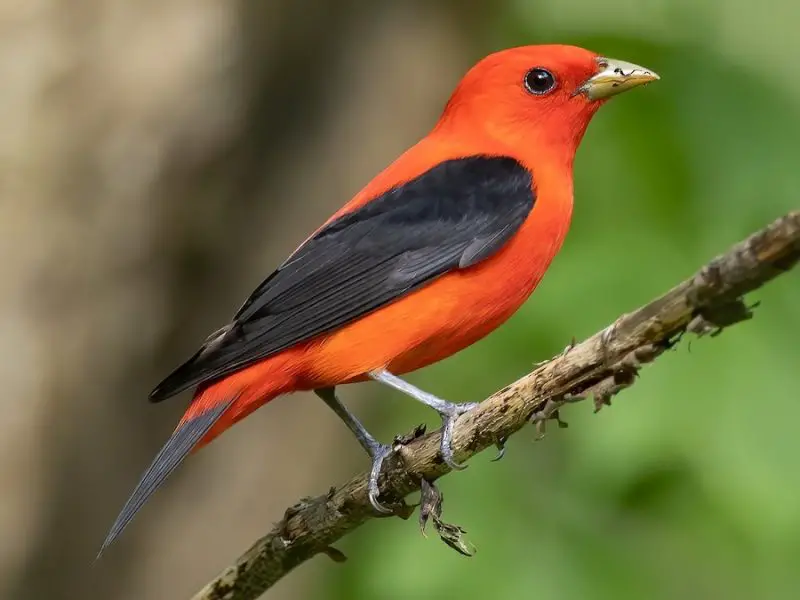
The Scarlet Tanager is another visually stunning member of the cardinal family. Adult males are bright scarlet with black wings and tails, while females and immature males are olive-yellow with darker wings, providing excellent camouflage. Their thick, pale bill is adapted for a diet of insects and fruit.
Scarlet Tanagers measure about 7.5–8.7 inches (19–22 cm) long with a wingspan of 12 inches (30 cm) and a weight around 1–1.3 ounces (28–36 grams). Their vibrant plumage is most visible during the breeding season in late spring and early summer when males sing distinctive, burry songs from high perches.
Behaviorally, Scarlet Tanagers are primarily insectivorous but also eat fruits and berries. They are shy and tend to stay in the forest canopy, making them more challenging to observe than Northern Cardinals. Males are highly territorial during breeding season and often engage in singing contests to establish dominance.
These tanagers prefer deciduous and mixed forests, particularly mature woodlands with large trees for nesting. In North Carolina, they are typically found in the Piedmont and Appalachian regions during summer. Their nests are woven high in branches, hidden by dense foliage.
Fun fact: Scarlet Tanagers undergo a complete plumage molt before migration, changing from bright red to a more subdued olive color, which helps them blend in during their journey to South America.
Rose-breasted Grosbeak (Pheucticus ludovicianus)
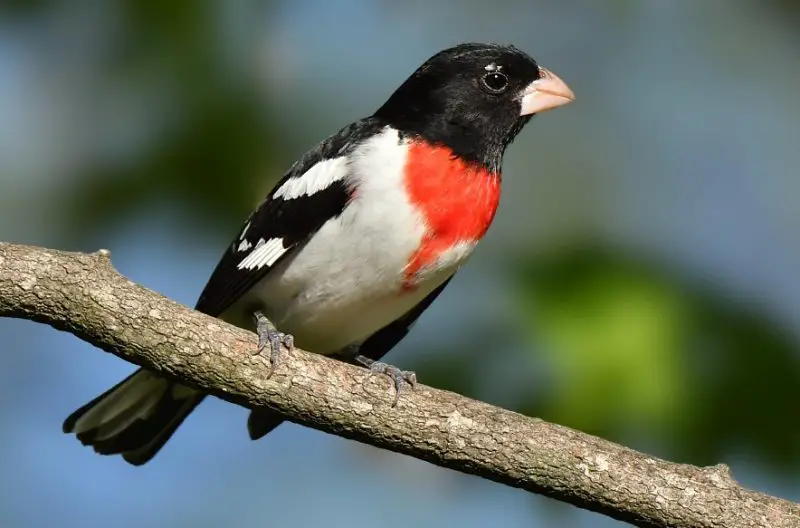
The Rose-breasted Grosbeak is a striking songbird that draws attention with its bold coloring. Adult males have black heads and backs, white underparts, and a bright rose-red patch on the chest, while females are brown-streaked with buffy underparts, resembling large sparrows. Both sexes have thick, conical beaks designed for cracking seeds and eating fruit.
Adults measure 7.5–9 inches (19–23 cm) in length with a wingspan of 11–14 inches (28–36 cm) and weigh about 1.2–1.5 ounces (34–43 grams). Their medium size, contrasting coloration, and melodious song make them a favorite among birdwatchers.
Rose-breasted Grosbeaks are primarily migratory, spending summers in North Carolina and winters in Central and South America. They feed on seeds, berries, and insects, and males are known for their rich, robin-like song, which resonates throughout forests and gardens.
These birds favor wooded areas, forest edges, and large gardens, often seen foraging in shrubs or tree canopies. They construct sturdy cup-shaped nests in forks of trees, generally well-concealed to protect against predators.
Fun fact: The Rose-breasted Grosbeak’s striking red chest patch is used in courtship displays; males often fluff their chest feathers to attract mates.
Indigo Bunting (Passerina cyanea)
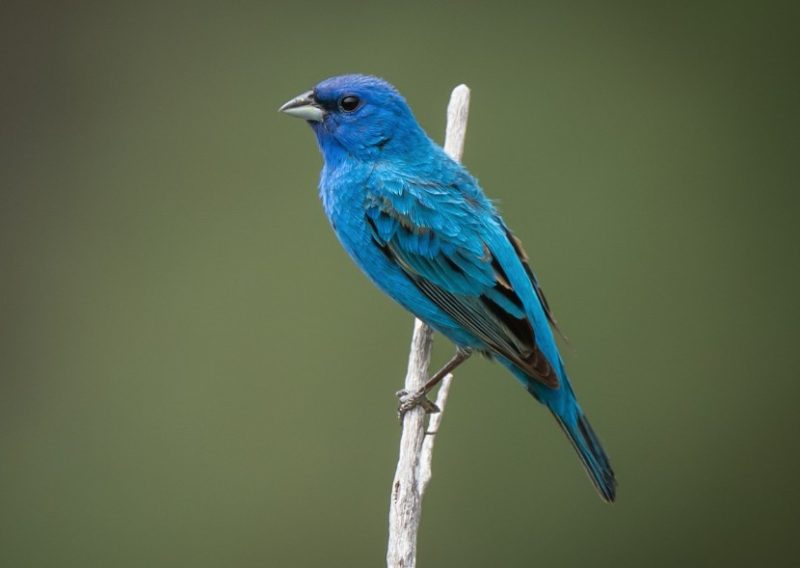
The Indigo Bunting is a small but brilliantly colored bird, especially males during the breeding season. Adult males are vivid blue all over, while females are brown with faint streaks, providing camouflage. They have short, conical bills adapted for seed-eating, though they also consume insects during summer.
Indigo Buntings measure 4.5–5 inches (11–13 cm) long with a wingspan of 7–9 inches (18–23 cm) and weigh roughly 0.5–0.7 ounces (14–20 grams), making them one of the smaller cardinal relatives. Their bright color and melodic song make males highly visible during the breeding season.
Behaviorally, males sing from perches to establish territory and attract mates. They feed on seeds, berries, and insects, often foraging low in shrubs or on the ground. They are migratory, arriving in North Carolina in late spring and departing for Central America and the Caribbean in late summer or fall.
Indigo Buntings inhabit open woodlands, fields with scattered shrubs, and forest edges, where dense vegetation provides nesting sites and protection. Their nests are small cups built low in bushes or trees, camouflaged among leaves.
Fun fact: Indigo Buntings navigate during migration using the stars; young males learn the night sky to find their way south in autumn.
Best Time and Places to Observe Cardinals in North Carolina
Observing cardinals in North Carolina can be a rewarding experience, especially when you know the best times and habitats for each species.
The Northern Cardinal is a year-round resident and can be seen easily in gardens, suburban areas, woodland edges, and local parks throughout the state.
Summer Tanagers are more seasonal visitors, typically appearing from late April through August. They favor open woodlands, forest edges, and riparian zones, particularly in the Piedmont and Coastal Plain regions.
Scarlet Tanagers are mostly observed from May to September, preferring deciduous and mixed forests, often in the Appalachian foothills and mature woodland areas.
The Rose-breasted Grosbeak is commonly spotted between May and July in wooded areas, forest edges, and large gardens, particularly in the Piedmont regions.
Finally, the Indigo Bunting can be seen from May to August in open woodlands, fields with scattered shrubs, forest edges, and along farmland borders. By visiting these habitats during their peak seasons, birdwatchers have a higher chance of spotting these vibrant cardinal species.
FAQs About Cardinals in North Carolina
What is the most common cardinal in North Carolina?
The Northern Cardinal is the most widespread and easily observed species in North Carolina. Its bright red males and year-round presence make it a favorite for birdwatchers and backyard enthusiasts alike.
When is the best time to see Summer Tanagers in North Carolina?
Summer Tanagers are best observed from late April through August, which coincides with their breeding season. They are usually found in open woodlands, forest edges, and riparian zones, where males sing from treetops to establish territory.
How can I distinguish Scarlet Tanagers from Summer Tanagers?
Male Scarlet Tanagers have a vivid scarlet body with black wings and tail, while male Summer Tanagers are entirely red. Females are less colorful, but habitat and subtle plumage differences can help distinguish the two species.
Where are Indigo Buntings most likely to be seen in North Carolina?
Indigo Buntings are commonly seen in open woodlands, fields with scattered shrubs, forest edges, and along farmland borders. Their bright blue males are especially noticeable during the breeding season from May to August.
Do cardinals migrate in North Carolina?
The Northern Cardinal is a non-migratory, year-round resident. Other cardinal relatives, such as Summer Tanager, Scarlet Tanager, Rose-breasted Grosbeak, and Indigo Bunting, are migratory, typically arriving in spring and leaving by late summer or early fall.


